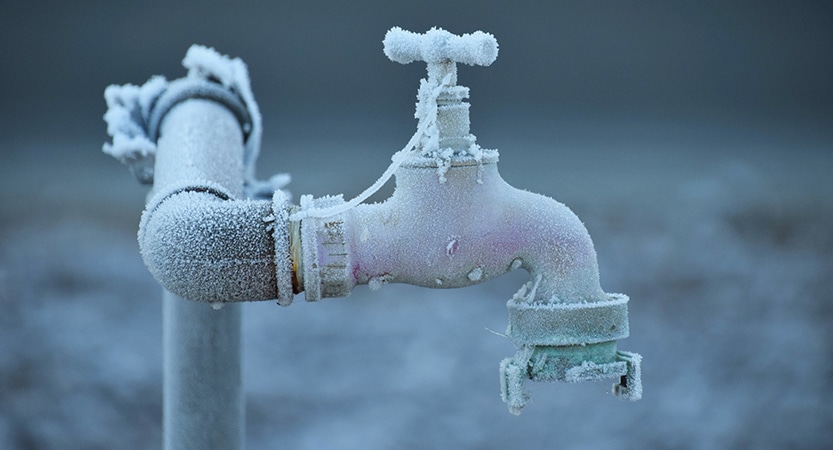Important Tips for Preventing Frozen Plumbing in Winter Conditions
Important Tips for Preventing Frozen Plumbing in Winter Conditions
Blog Article
This great article down below relating to How to prepare your home plumbing for winter weather is exceedingly motivating. You should investigate for yourself.

Winter can ruin your pipes, especially by freezing pipelines. Right here's how to prevent it from happening and what to do if it does.
Intro
As temperature levels drop, the danger of icy pipelines boosts, possibly resulting in costly repair services and water damages. Comprehending exactly how to stop icy pipelines is crucial for house owners in cool climates.
Understanding Frozen Pipes
What creates pipelines to freeze?
Pipes freeze when subjected to temperatures listed below 32 ° F (0 ° C) for prolonged periods. As water inside the pipelines freezes, it increases, taxing the pipeline wall surfaces and possibly causing them to break.
Dangers and problems
Frozen pipelines can result in supply of water disruptions, property damages, and pricey repair work. Burst pipes can flood homes and cause comprehensive architectural damages.
Indicators of Frozen Pipes
Identifying icy pipelines early can stop them from breaking.
Just how to recognize icy pipelines
Search for lowered water circulation from faucets, uncommon odors or sounds from pipes, and visible frost on revealed pipes.
Prevention Tips
Protecting susceptible pipes
Wrap pipes in insulation sleeves or use warmth tape to protect them from freezing temperature levels. Concentrate on pipes in unheated or outside locations of the home.
Home heating strategies
Maintain interior areas sufficiently heated up, especially areas with plumbing. Open cupboard doors to enable cozy air to distribute around pipes under sinks.
Securing Exterior Pipes
Yard tubes and exterior taps
Separate and drain yard tubes prior to winter months. Mount frost-proof spigots or cover outdoor faucets with shielded caps.
What to Do If Your Pipes Freeze
Immediate activities to take
If you believe frozen pipelines, keep faucets open to ease stress as the ice melts. Utilize a hairdryer or towels taken in warm water to thaw pipelines gradually.
Long-Term Solutions
Architectural adjustments
Consider rerouting pipes away from outside wall surfaces or unheated locations. Add additional insulation to attics, cellars, and crawl spaces.
Upgrading insulation
Purchase premium insulation for pipes, attics, and wall surfaces. Appropriate insulation aids preserve regular temperatures and minimizes the threat of frozen pipes.
Final thought
Protecting against frozen pipelines requires proactive steps and fast responses. By comprehending the reasons, indicators, and safety nets, house owners can safeguard their plumbing throughout cold weather.
6 Proven Ways to Prevent Frozen Pipes and Protect Your Home
Disconnect and Drain Garden Hoses
Before winter arrives, start by disconnecting your garden hoses and draining any remaining water. Close the shut-off valves that supply outdoor hose bibs and leave the outdoor faucet open to allow any residual water to drain. For extra protection, consider using faucet covers throughout the colder months. It’s also important to drain water from any sprinkler supply lines following the manufacturer’s directions.
Insulate Exposed Pipes
Insulating your pipes is an effective way to prevent freezing. Pipe insulation is readily available at home improvement stores and is relatively inexpensive. Pay close attention to pipes in unheated areas such as the attic, basement, crawl spaces, or garage. Apply foam insulation generously to create a buffer against the cold. You can also wrap your pipes in heat tape or thermostat-controlled heat cables for added warmth.
Seal Air Leaks
Inspect your home for any cracks or openings that could let in cold air. Seal any holes around the piping in interior or exterior walls, as well as the sill plates where your home rests on its foundation. Additionally, make sure to keep your garage door closed unless you’re entering or exiting. Leaving it open creates a significant air leak that can lead to frozen pipes.
Allow Warm Air Circulation
During cold snaps, it’s essential to allow warm air to circulate evenly throughout your home. Leave interior doors ajar to promote better airflow. Open kitchen and bathroom cabinets to help distribute heat consistently around the rooms. If you have small children or pets, be sure to remove any household chemicals or potentially harmful cleaners from open cabinets for safety.
Let Faucets Drip
A small trickle of water can make a big difference in preventing ice formation inside your pipes. When temperatures drop significantly, start a drip of water from all faucets served by exposed pipes. This continuous flow helps prevent the water from freezing. Additionally, running a few faucets slightly can relieve pressure inside the pipes, reducing the chances of a rupture if the water inside does freeze.
https://choateshvac.com/6-proven-ways-to-prevent-frozen-pipes-and-protect-your-home/

I have been very interested in Winter Plumbing Precautions: Preventing Frozen Pipes and I hope you liked my blog post. Feel free to take a moment to promote this page if you enjoyed it. We recognize the value of reading our article about Preventing and dealing with frozen pipes.
Automated Marketing Report this page